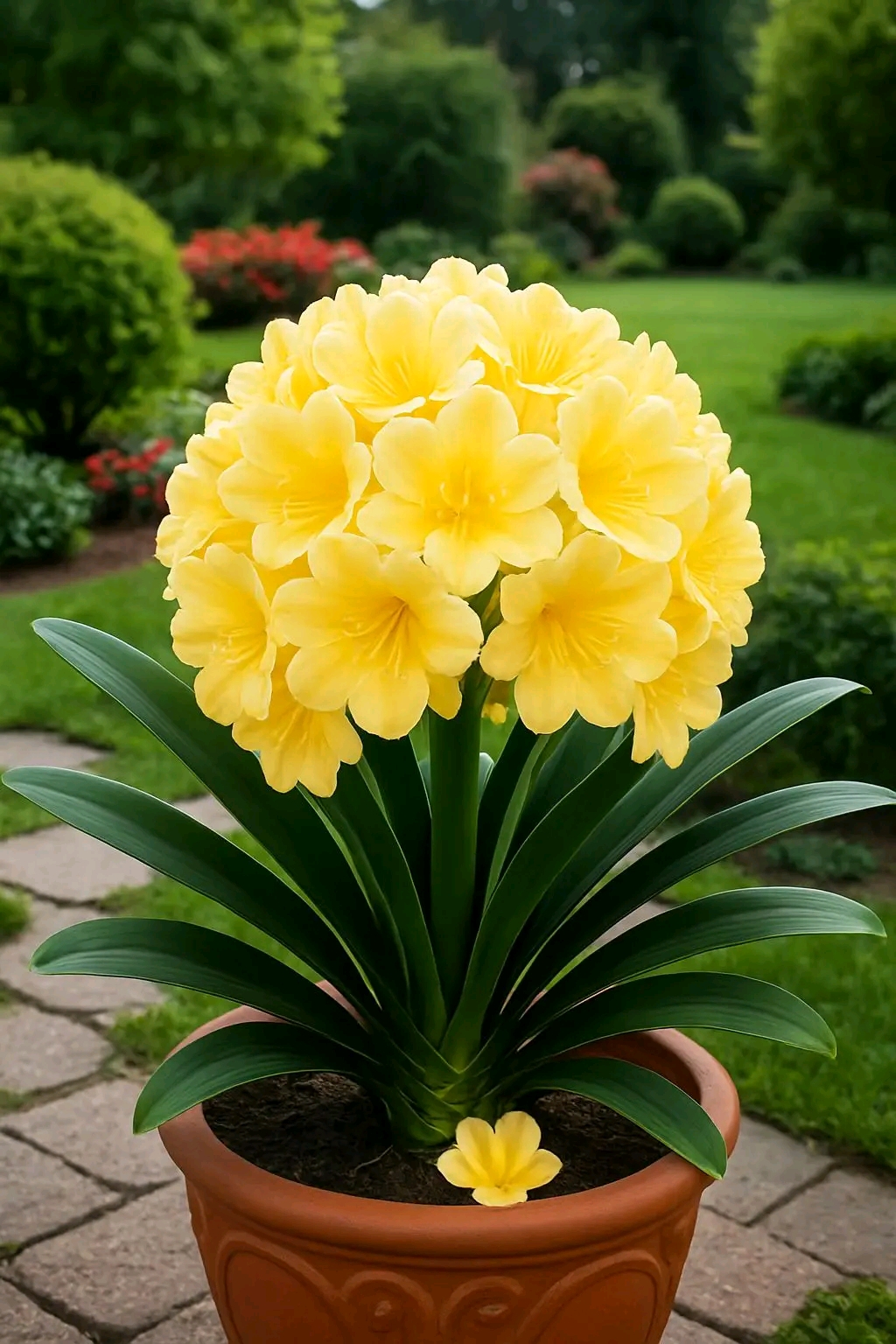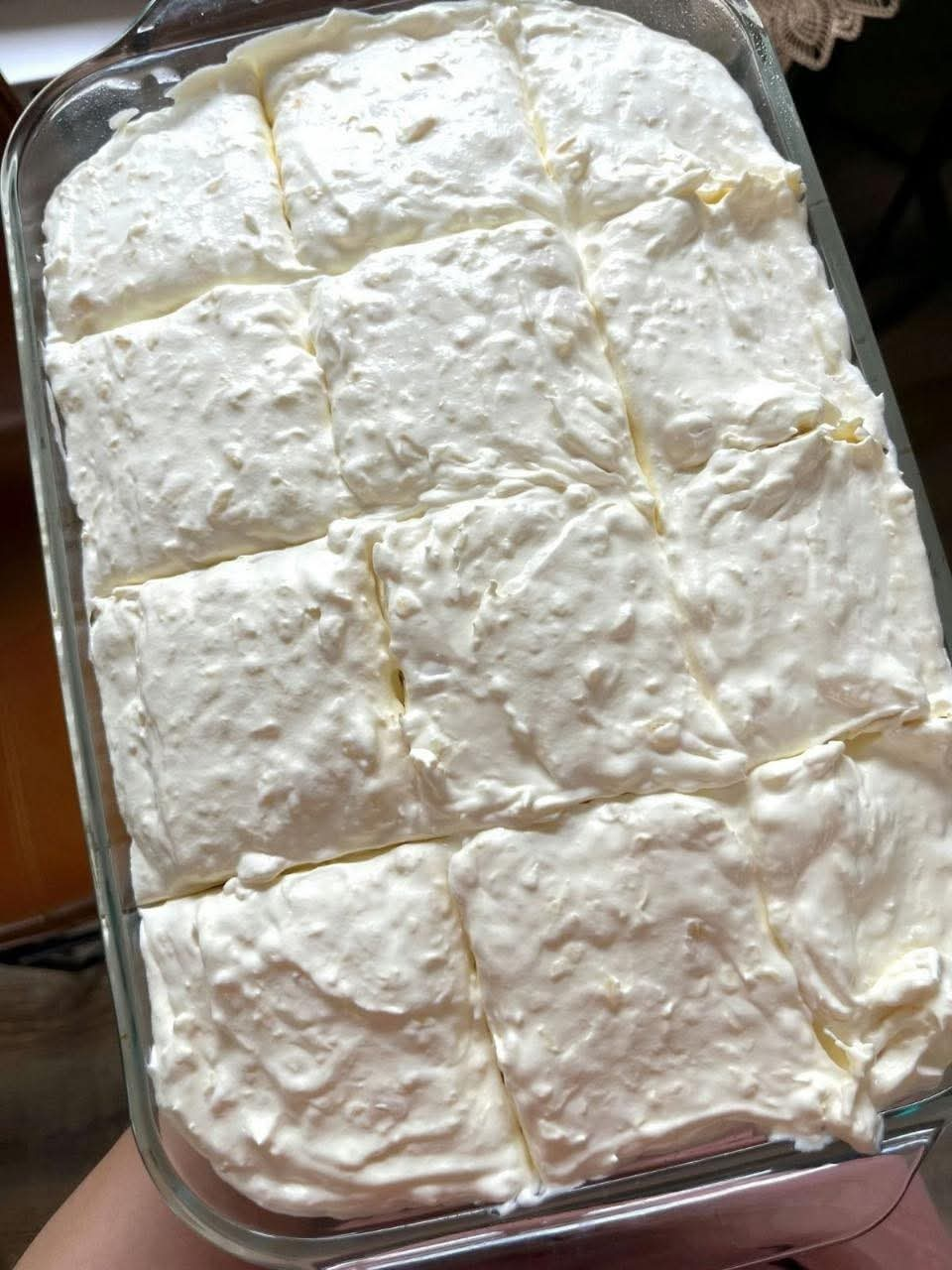Few plants can match the elegant charm and sunny brilliance of a yellow clivia. With its glossy green foliage and vibrant cluster of golden blooms, this plant is both a showstopper and a reliable performer in gardens and indoor spaces. Whether you’re a seasoned gardener or someone looking to add a splash of color to your home, the yellow clivia is a choice that offers beauty without excessive demands.
In this article, we’ll explore the history, botanical details, growing requirements, and care tips for yellow clivia. We’ll also dive into propagation methods, common issues, and creative ways to use this stunning plant in your landscaping or décor.
🌿 A Brief History and Origin
Clivia plants belong to the Amaryllidaceae family and are native to southern Africa, particularly the shady woodlands of South Africa’s coastal and forested regions. The genus is named after Lady Charlotte Clive, Duchess of Northumberland, who was one of the first to cultivate them in England during the 19th century.
While the traditional clivia flowers are usually orange, the yellow clivia (Clivia miniata var. citrina) is a prized variation that was discovered later. Its golden petals became highly sought after among collectors and plant enthusiasts due to their rarity and cheerful appearance.
🌸 Botanical Features
Yellow clivia is characterized by:
Foliage: Long, strap-like dark green leaves that grow in a fan shape from the plant’s base. These leaves are evergreen, adding structure and elegance year-round.
Flowers: Umbel-like clusters of trumpet-shaped blooms, each with six petals. The yellow variety offers a soft to vibrant golden hue, depending on cultivar.
Height & Spread: Typically 18–24 inches (45–60 cm) tall with a spread of 18 inches, making them ideal for pots and borders.
Growth Habit: Clivia is a clump-forming perennial that thrives in shade or dappled sunlight.
🌞 Light Requirements
One of the reasons clivia is beloved is its adaptability to lower light conditions compared to many other flowering plants.
Indoors: Place in bright, indirect light for optimal flowering. A north- or east-facing window works well. Avoid direct, harsh midday sun, which can scorch leaves.
Outdoors: Grows best in dappled shade under trees or on shaded patios. Direct afternoon sun should be avoided in hot climates.
💧 Watering Needs
Clivia enjoys a rhythm of alternating moisture and dryness.
Growing Season (Spring–Summer): Keep the soil slightly moist but never waterlogged. Water thoroughly when the top inch of soil feels dry.
Dormant Period (Late Autumn–Winter): Reduce watering significantly. Let the soil dry out almost completely between waterings to encourage bud formation.
Overwatering is the most common cause of clivia problems, often leading to root rot. Always ensure good drainage.
🌱 Soil and Potting
Clivia prefers a well-draining, slightly acidic soil mix. A blend of potting soil, peat moss, and coarse sand or perlite works well. In containers, use pots with drainage holes to prevent soggy roots.
Repotting is only necessary every 3–5 years, as clivia likes to be slightly rootbound. Frequent repotting can delay flowering.
🌸 Flowering and Bloom Cycle
Yellow clivia typically blooms once a year, often in late winter or early spring, depending on the climate and care.
To encourage blooms:
Provide a cool, dry rest period in winter (around 50–55°F / 10–13°C).
Reduce watering during this rest phase.
Once buds form, resume regular watering and feeding.
Flowers last 3–4 weeks and can be followed by attractive berries if pollination occurs.
🍽️ Feeding and Fertilization
Feed clivia with a balanced, water-soluble fertilizer every 2–4 weeks during the active growing season. Once flower buds appear, a fertilizer slightly higher in potassium can help enhance blooms.
During the dormant phase, stop feeding entirely until growth resumes.
🌿 Propagation
Yellow clivia can be propagated in two main ways:
Division:
Best done after flowering, when repotting.
Separate offsets from the parent plant, ensuring each has roots attached.
Pot them individually in fresh soil.
Seeds:
Seeds can be collected from ripe berries, but they require patience — plants grown from seed can take 3–5 years to flower.
🐛 Common Problems and Solutions
Root Rot: Usually caused by overwatering or poor drainage. Remedy by repotting into fresh, well-draining soil and adjusting watering habits.
Leaf Tip Browning: Can be due to too much direct sunlight, excessive fertilizer, or inconsistent watering. Trim damaged tips and adjust care.
Lack of Blooms: Often caused by insufficient light, lack of a cool rest period, or too frequent repotting.
Pests are relatively rare but can include mealybugs, scale insects, and aphids. A gentle wipe with insecticidal soap or neem oil can help.
🎨 Landscape and Decorative Uses
Yellow clivia’s bold leaves and sunny blooms make it versatile for various settings:
Patio Pots: Perfect for shaded or partially shaded decks and patios.
Indoor Displays: Adds a touch of tropical elegance to living rooms and offices.
Understory Planting: Ideal for planting beneath trees where grass struggles.
Focal Points: A single potted clivia in bloom can be a stunning centerpiece for special occasions.
Pairing them with ferns, hostas, or impatiens in the garden can create a lush, layered look.
🌏 Sustainability and Longevity
Clivia is a long-lived plant — some specimens can thrive for decades with proper care, often becoming heirlooms passed from one generation to the next. They are also relatively eco-friendly, as their low water needs make them suitable for water-wise gardening.
Because they thrive in partial shade, they can reduce the need for excessive landscaping changes to increase sunlight, making them an environmentally conscious choice for difficult spots in the garden.
💛 Why Yellow Clivia is Special
While orange clivia is more common, yellow varieties hold a certain prestige. They’re rarer, often more expensive, and treasured by collectors. The sunny hue has a symbolic resonance too — yellow flowers often represent joy, renewal, and friendship.
A yellow clivia in bloom can brighten not only a space but also a gardener’s mood. Its long-lasting blossoms and minimal fussiness make it a plant worth cherishing.
🌼 Final Thoughts
The yellow clivia is a plant that delivers beauty with grace and reliability. Whether showcased in a decorative clay pot on a shaded patio or serving as a centerpiece in a cozy living room, it offers year-round foliage and seasonal bursts of color.
By providing the right mix of light, water, and rest, even novice gardeners can enjoy its spectacular blooms year after year. And with its long lifespan and enduring elegance, a yellow clivia isn’t just a plant — it’s an investment in beauty and happiness.
So, if you’ve been looking for a low-maintenance plant that makes a high-impact statement, the yellow clivia might just be the ray of sunshine your garden or home needs.
More Articles You Might Like
-
Texas Toast Sloppy Joes: The Crunchy, Cheesy Upgrade You Didn’t Know You Needed
There’s something timeless about sloppy joes. For generations, this saucy, savory, and slightly sweet ground beef sandwich has been a go-to comfort food in American kitchens. It’s quick, filling, and family-friendly—perfect for busy weeknights. But what if we told you there’s a way to take this classic dish up a notch? Enter the Texas Toast…
-
Classic Pig Pickin’ Cake
When it comes to Southern desserts, few sweets shine as brightly as the Classic Pig Pickin’ Cake. This nostalgic cake, sometimes called a “Mandarin Orange Cake,” has roots deep in Southern tradition. It gets its playful name from its frequent appearance at pig pickin’s—Southern-style barbecue gatherings where communities come together to enjoy slow-cooked pork, sides,…
-
Lemon Garlic Butter Chicken with Creamy Parmesan Pasta
There’s something irresistible about the combination of tender, golden-browned chicken paired with a creamy pasta coated in Parmesan cheese. Add the brightness of lemon, the depth of garlic, and the richness of butter, and you have a recipe that feels indulgent yet approachable enough for a weeknight dinner. Lemon Garlic Butter Chicken with Creamy Parmesan…



